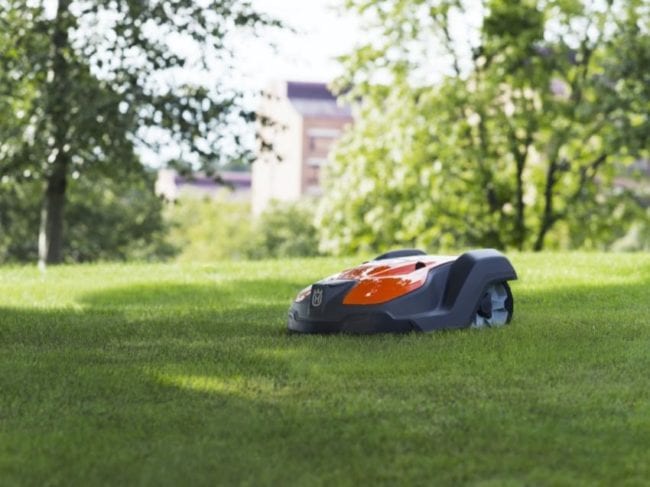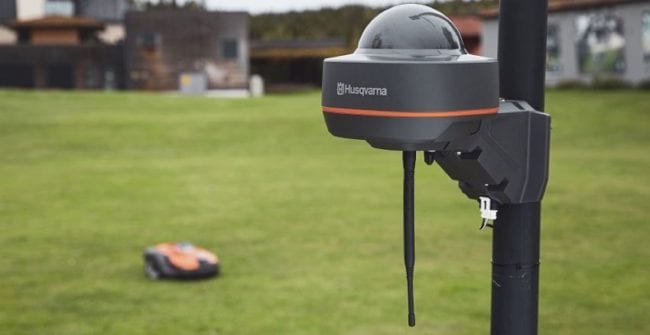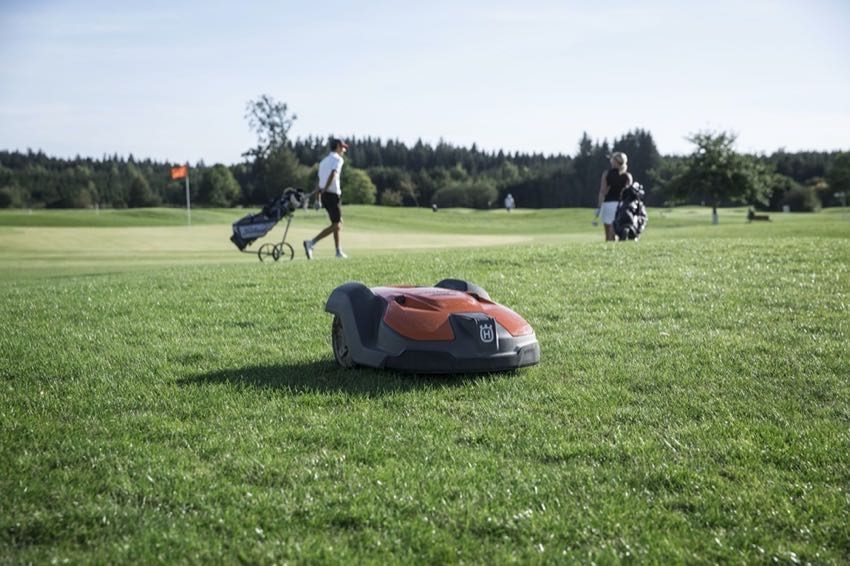If you’ve seen a small, unmanned device cutting a neighbor’s grass, you already know that residential robotic lawn mowers have gained in popularity. It’s easy to understand the reason: they offer a carpet-like lawn of constant height—and a lot more free time! It’s only natural for Pro landscapers to wonder if the same technology can help them make the jump to using commercial robotic lawn mowers in their work.
We wanted to examine what it means for their businesses. Husqvarna’s Steve Uljua, a Product Manager focused on robotics, graciously offered his expertise on the landscape of commercial robotic lawn mowers now—and in the near future.
The Grass Is Greener
Steve explains that North America is the world’s largest landscape market. Husqvarna’s residential robotic products have been successful in Europe, but the continent’s commercial market is quite small. In fact, the company didn’t have plans to enter the commercial robotic lawn mower space until the North American side of the company created a viable plan.

That plan began to unfold two years ago with the introduction of the Automower 550 for commercial applications. And it appears to be working. Husqvarna’s commercial robotic lawn mower segment now has its own sales director and sales force. It’s poised to eclipse its residential sales in the next couple of years.
The Automower 550 is based on the Husqvarna’s residential 450X platform. It differs mainly in the user interface, making it easier for Pros to start the machine. You don’t need to enter a pin number as with the consumer-focused 450X. The 550 retains all the safety and theft protection options of the 450X. That includes low- and high-security functions, lift sensors that stop the blades, geofencing as a function of distance from the base station, GPS tracking with a SIM card, and app-based Bluetooth control within ~100 feet of the machine.
Commercial Robotic Lawn Mowers Now
Though Husqvarna’s commercial robotic lawn mower sales are growing rapidly, Steve says it’s still early in the adoption process. Could there be resistance from Pro landscapers who think the robots might eliminate their work? Perhaps, but Steve persuasively explains that using robotic mowers is a means by which the Pros can earn more money. It’s a great way to upsell for additional landscaping services. It also offers consistent lawn height and cut quality, produces less noise, and leaves no muddy wheel marks when the ground is wet. Plus, you reduce the number of strangers milling around the house.
But isn’t the cost of a commercial robotic lawn mower cost-prohibitive for the Pro? Steve gives this illustration: Say a Landscape Pro has 25 homes to mow and a $10,000 zero-turn mower which will have to be replaced every three years. A robotic fleet sounds nice, but at first glance installing 25 robots at $2,000 each doesn’t seem to make sense relative to the zero-turn. But consider this: with a robotic fleet, there’s no workman’s comp to pay. You have negligible maintenance costs and labor that always shows up for work. You avoid getting rained out, and the robotic lawn mowers last at least ten years!
With all of these benefits accruing to both the consumer and the Landscape Pro, Husqvarna finds that customers are willing to sign 3-year leases instead of just one. This makes the setup costs of burying the guide wire even more appealing. It’s a different perspective, to be sure. However, when using commercial robotic lawn mowers to take care of the grass, landscaping business owners can offer add-on services and earn more.
Commercial Robotic Lawn Mowers Soon
On the horizon of the commercial robotic lawn mower space is something certain to capture the attention of even more Landscape Pros. Husqvarna will introduce EPOS. This employs RTK technology that’s been used in farming for years to offer satellite-guided mowing for large areas. This differs from random-pattern mowing that uses a buried guide wire. With EPOS you no longer have to worry about damage to the wire from turf maintenance functions like aerating.

What is RTK Technology?
Real-time kinematic (RTK) positioning uses satellite navigation but enhances the precision of position data derived from GPS data sources. Because it uses measurements of the phase of the signal’s carrier wave and uses a single reference station to provide real-time corrections, you get accuracy down to the centimeter-level. RTK currently shows up in several industries including unmanned aerial vehicle navigation.
We envision golf courses, ball fields, parks, and other large campuses benefitting from EPOS. Also, under favorable conditions, EPOS could make the elusive “drop-and-mow” business possible for the Landscape Pro. He could potentially use the same mower for residential properties in close proximity. Incidentally, Husqvarna also plans large diesel-battery hybrids with EPOS for even larger spaces like airports and rough terrain. We’ll be sure to follow up on that when it arrives.
A Quality Cut
For now, Steve and Husqvarna continue to work with developers to reimagine large spaces as commercial robotic lawn mower-friendly. You do this by eliminating parking lot islands with grass, for instance. It’s especially advantageous for large properties to use robotic mowers. They not only benefit from the aesthetics but also get the superior cut quality. Better cut quality means better shoot density, which results in better mud control, and lower demand for fertilization and water.
And that’s something we’ll ponder as we see more and more Pros using commercial robotic lawn mowers to do the heavy lifting!
Special thanks to Maggie Coleman with Brandware PR, and Steve Uljua, Product Manager, focused on robotics at Husqvarna.



